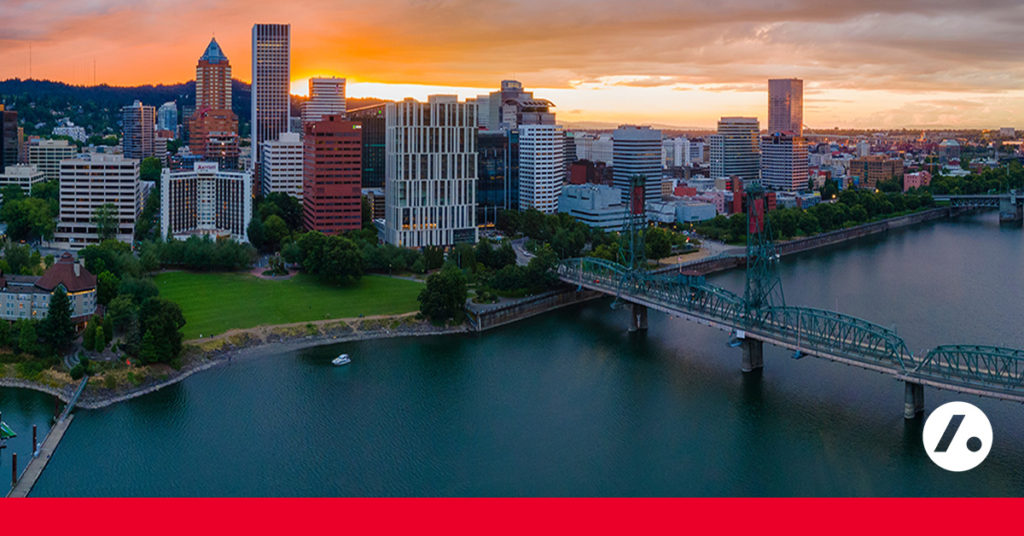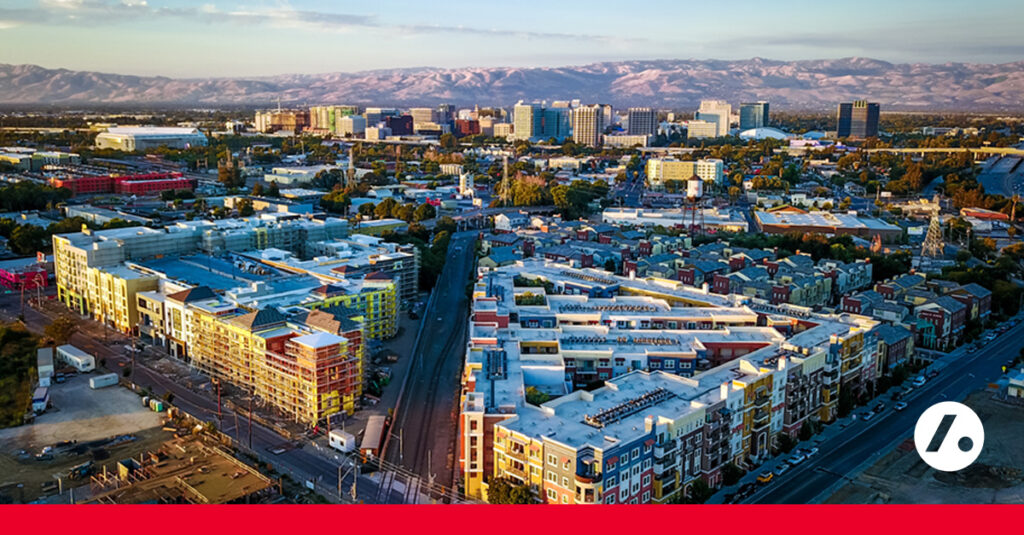
Portland: A Top Destination for Job Seekers and Employers
Did you know that Portland—Oregon’s largest city with 653K people—is the most bike-friendly city in America with 350+ bike lanes and an advanced bike infrastructure? The city’s commitment to planet Earth along with the new infrastructure for cyclists and walkers earned its recognition as one of Time Magazine’s World’s Great Places of 2022. From Portland, you can drive 78 miles west to get to the nearest beach and or 54 miles east to be in the mountains at the nearest ski resort. Portland is packed full of fun things to do and see if you’re a fan of microbreweries and coffeehouses, natural wilderness, and smelling the more than 10,000 rose bushes at the International Rose Test Garden. But the city is much more than fun and exploration—it’s also a top destination for job seekers and employers alike.
The Draw for Employers
Companies are relocating to Portland because it’s one of the few markets that grew during the pandemic—with 30,000 people moving to the area every year. With large anchor businesses—like Columbia Sportswear, Daimler Trucks, Intel, Nike, Oregon Health & Science University (OHSU), Wells Fargo, and The Standard—and access to green energy through wind, solar, and hydroelectric power, Portland is an easy location to attract talent to from expensive metropolitan areas like Silicon Valley and Seattle. These same large businesses draw their vendors into the Portland area which creates great synergy with other local businesses. Oregon’s lack of sales tax provides a great boost for the retail industry that brings consumers from neighboring states just to shop.
Oregon has a creative incentive, Oregon Investment Advantage, that encourages small and medium businesses to start or locate in selected counties in the state. A company that hires as few as five full-time employees within an eligible county can substantially deduct—if not eliminate—its state business income tax liability for up to eight years. For smaller organizations, this incentive is incredibly beneficial because it allows them to reinvest money back into their business that would have otherwise gone to the government. Another attractive incentive for small and medium businesses is the Oregon New Market Tax Credit (NMTC) which delivers below-market-rate investment options to Oregon businesses that invest in and revitalize low-income communities—nearly half of downtown Portland qualifies as low-income. Businesses that are successful in securing NMTCs receive a 39 percent tax credit of the total qualified investment over seven years. The NMTC Impact in Oregon 2003-2021 Fact Sheet—with projects and investments, direct jobs generated, and other highlights—can be found here. Lastly, Oregon allows corporate net operating losses to be carried forward for up to 15 years without a cap. That means a business can apply this year’s net operating loss to future years’ profits and reduce its tax liability.
The Attraction for Job Seekers
Known as one of the best places to live, Portland has become a top destination for young professionals and families—ranking fourth on the list for millennials. The draws include overwhelming natural beauty, an eccentric culture, diversity, friendly locals, and four seasons. Portland is often referred to as one of America’s most environmentally friendly cities and is making major efforts toward sustainability. But what attracts job seekers to Portland?
The growing number of tech opportunities: Portland’s tech-industry boom over the last ten years has earned it the nickname Silicon Forest. With more than 1,200 technology companies within the metro area, there’s no shortage of tech opportunities in Portland. Several top technology companies—including Epson, Hewlett-Packard, Intel, Pixelworks, Tektronix, and Xerox—have chosen to locate in the Silicon Forest due to its proximity to high-tech cities like San Francisco and Seattle.
“The Portland tech community is moving forward at an incredible pace, but that pace is not sustainable without the talent to support it,” said John Boone, ProFocus Technology Founder and President. “Companies must change how they recruit and develop talent—it’s important to understand that candidates are looking for flexibility, career development, and better compensation. The companies that prioritize these offerings will secure the talent they need to fuel their aggressive 2022 plans.”
Cost of living: Compared to cities like San Francisco, Seattle, and Los Angeles, Portland has a much lower cost of living—when it comes to rent, groceries, transportation, and utilities—with all the advantages of bigger metropolises. Here are some examples:
- Moving from Portland to Seattle would mean a 15.3 percent higher cost of living and an 8.6 percent housing increase.
- Moving from Portland to Los Angeles would bring an 11 percent higher cost of living and a 27 percent housing increase.
Training and placement programs: In April of 2022, Governor Kate Brown signed into law a $200 million workforce spending plan targeted at people of color for job training in health care, manufacturing, and construction. The funding helps to subsidize costs like child care, housing, and transportation while workers learn new skills.
Are you an employer or job seeker contemplating expanding or relocating to the Portland area? Download Acara’s latest infographic for more labor force statistics—including top growing occupations, largest industries, and employment data.
This blog was authored by Acara Regional Director of Business Development Damian Scandiffio.




